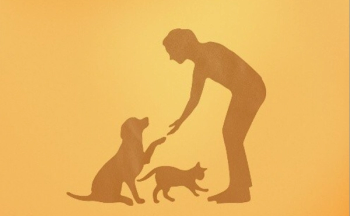
Critically endangered gorilla infant rescued in Cameroon
An infant western lowland gorilla, who was the victim of poaching, was saved by Ape Action Africa
A critically endangered western lowland gorilla infant was confiscated by the Cameroon Ministry of Forestry and Wildlife (MINFOF) and entrusted to the care of Ape Action Africa (AAA), a conservation sanctuary for endangered primates in Cameroon.1 At the time of her rescue, the gorilla had suffered a gunshot wound, a fractured skull, and wounds around her waist from rough restraints.1
Veterinary surgeons with AAA were able to remove part of the bullet, which had broken apart upon entry. The 18–24-month-old female gorilla was then placed under 24-hour care from one of AAA’s most experienced gorilla caregivers, and she is officially in recovery. The gorilla has since been named Barbie, after one of AAA’s supporters.1
“Gorilla infants are fragile,” Rachel Hogan, OBE, director of AAA, said in a news release.1 “It was days until we even knew whether she would allow us to help her, and not knowing the extent of her injuries during that time, we couldn’t speculate on her chances of survival.”
A “Wandering Bus” from Prague Zoo—which aims to raise awareness about sustainable forest usage among young Cameroonians, introducing them to gorillas and other wild animals—was traveling through the town of Lomié, Cameroon, when a man approached, offering an infant gorilla that he claimed to have found on a plantation.1 Members of the MINFOF Eco-guard, who were traveling alongside the bus, immediately began the process of confiscating the animal. The infant was immediately transported to AAA.1
Western lowland gorillas are the most numerous and widespread subspecies of gorilla.2 They are found in Cameroon, the Central African Republic, the Democratic Republic of Congo, Equatorial Guinea, Gabon, and the Republic of Congo.2 Although they’re considered critically endangered—meaning they face extreme risk of extinction from the wild—their exact population is unknown because of the dense and remote rainforests which they inhabit.
The Ebola virus has been the most significant threat to the population of western lowland gorillas, with scientists estimating that the virus is responsible for the deaths of 1/3 of the wild gorilla population in Africa, mostly western lowland gorillas.2 In the case of the Minkébé Forest—once considered to be one of the most significant gorilla populations—the virus could be responsible for the deaths of more than 90% of the region’s gorillas and chimpanzees.2
Poaching also poses a significant threat to western lowland gorilla populations. Although the practice is illegal, gorillas are still killed for bushmeat, and adults are often made casualties when poachers look to capture their babies as pets.2 The World Wildlife Fund attributes the ongoing practice, in part, to the growth of the African timber industry, which destroys habitats and opens areas of once remote, dense forest.2 The AAA believes Barbie is also a victim of poachers, explaining that, at her age, the only way she would have gotten separated from her family is if they had been killed.1
Once Barbie has completed her recovery quarantine, she will join other gorilla rescues in a lush, forested, and contained habitat. There are currently no release sites for reintroducing critically endangered western lowland gorillas back into the wild in Cameroon.1
References
- Ape Action Africa: Critically Endangered Gorilla Infant Rescued in Cameroon by Cameroon Ministry of Forestry and Wildlife. News release. Ape Action Africa, Inc. October 3, 2024. Accessed October 3, 2024.
https://prnmedia.prnewswire.com/news-releases/ape-action-africa-critically-endangered-gorilla-infant-rescued-in-cameroon-by-cameroon-ministry-of-forestry-and-wildlife-302266383.html - Western Lowland Gorilla. World Wildlife Fund. Accessed October 3, 2024.
https://www.worldwildlife.org/species/western-lowland-gorilla#:~:text=The%20hunting%20and%20killing%20of,region%20are%20killed%20each%20year
Newsletter
From exam room tips to practice management insights, get trusted veterinary news delivered straight to your inbox—subscribe to dvm360.






